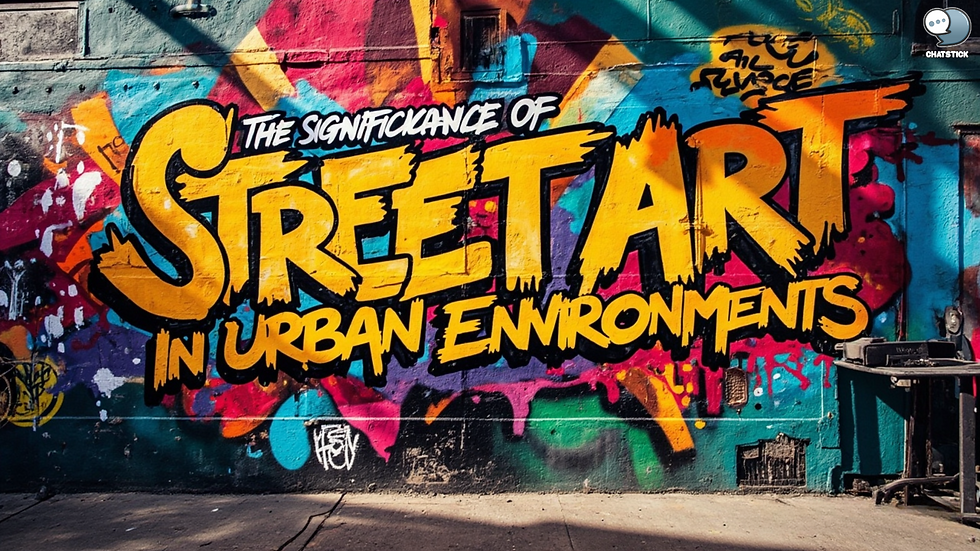The history of Art Brut and its influence on contemporary art
- ChatStick For Brand
- Jul 3, 2023
- 3 min read
Virtual Reality (VR) and Augmented Reality (AR) technologies have revolutionized various industries, and the field of art education is no exception. These immersive technologies offer new opportunities for artists, educators, and students to engage with art in innovative ways. From virtual galleries to interactive learning experiences, VR and AR are reshaping the art education landscape and providing unique avenues for creativity, exploration, and learning. This article explores the profound impact of virtual and augmented reality on art education and highlights the benefits and challenges associated with their integration into the curriculum.
Enhancing Accessibility: One of the most significant advantages of VR and AR in art education is their ability to enhance accessibility. Traditional art forms often require physical presence in specific locations, limiting access for those unable to visit museums or art galleries. However, with virtual galleries and AR applications, students can explore renowned artworks and cultural landmarks from anywhere in the world. This accessibility expands cultural understanding, promotes inclusivity, and enables students to engage with diverse art forms and styles.
Immersive Learning Experiences: VR and AR provide immersive learning experiences that enable students to interact with art in unprecedented ways. With VR, students can step into a three-dimensional virtual environment and explore artworks from different angles, providing a more comprehensive understanding of the artist's intentions. AR, on the other hand, overlays digital elements onto the real world, allowing students to interact with virtual objects, experiment with different artistic techniques, and create their own artworks.
Creative Expression and Experimentation: Virtual and augmented reality technologies encourage creative expression and experimentation among students. These technologies provide tools for digital painting, sculpting, and modeling, enabling students to explore various artistic techniques and mediums without the need for physical supplies. Moreover, VR and AR allow artists to push the boundaries of their creativity by providing new ways to combine digital and traditional art forms, blurring the lines between the physical and virtual worlds.
Collaboration and Community Building: Virtual and augmented reality foster collaboration and community building within the art education realm. These technologies enable students and artists to connect with peers and professionals from different geographic locations, sharing ideas, collaborating on projects, and receiving feedback in real-time. Virtual exhibitions and collaborative art spaces facilitate the creation of interdisciplinary projects, encouraging the exchange of knowledge and fostering a sense of community among learners.
Challenges and Limitations: While VR and AR offer numerous benefits, their integration into art education also poses challenges. Access to the necessary hardware and software can be a barrier, particularly in schools or regions with limited resources. Additionally, technical glitches and the learning curve associated with using VR and AR tools can impede the smooth implementation of these technologies. Educators must also address concerns regarding the balance between digital and traditional art forms, ensuring that students receive a well-rounded art education.
Conclusion: Virtual and augmented reality technologies have had a transformative impact on art education. They provide new avenues for accessibility, immersive learning experiences, creative expression, and collaboration. By embracing VR and AR, art educators can empower students to explore art in unprecedented ways, broaden their cultural horizons, and develop critical thinking skills. While challenges exist, the potential benefits of integrating these technologies into the art curriculum are substantial, ultimately shaping a new era of art education that combines the physical and virtual realms in innovative and exciting ways. #ArtEducation #VirtualReality #AugmentedReality #ImmersiveLearning #CreativeExpression #Collaboration #ArtAndTechnology #VirtualArtGalleries #DigitalArt #Innovation






Comments